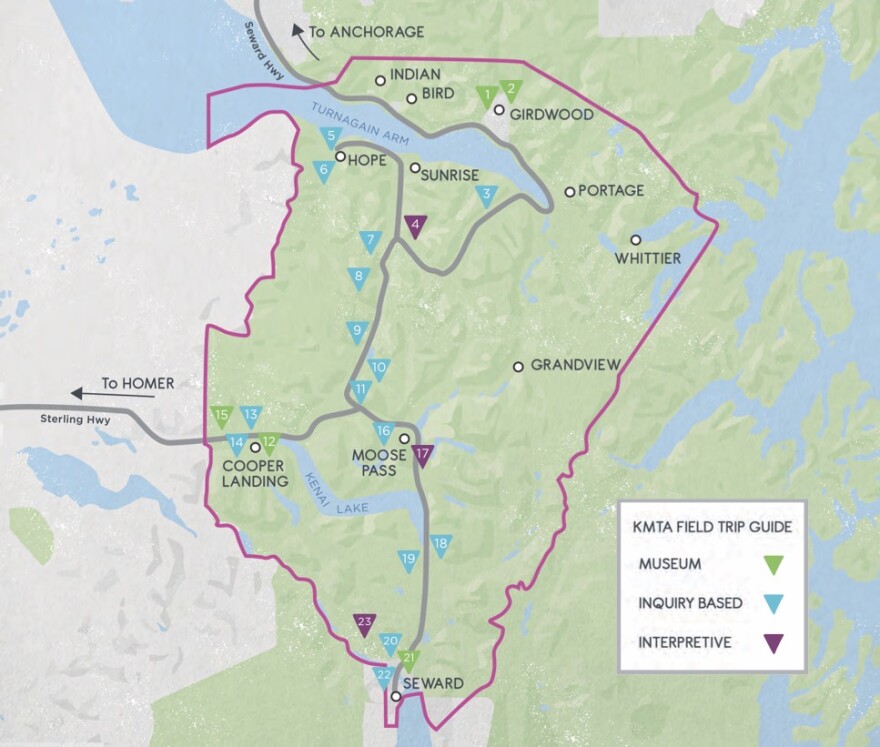An outdoor treasure hunt is coming to the Kenai Mountains-Turnagain Arm Heritage Area this summer, in a project that will combine the outdoor beauty of the region, its historical significance, and a sense of adventure.
Geocaching is a global outdoor activity where participants look for hidden containers, called caches, which can be found at specific locations available online. They often involve hiking or some other sort of adventuring to reach.
In partnership with the statewide organization GeocacheAlaska!, KMTA is in the process of installing a geotrail through its corridor. Emily Stewart with GeocacheAlaska! said a geotrail is a collection of caches in a common area that follow a theme. If participants find a certain number of the caches, they can receive a prize.
Stewart said there are more than 8,000 caches in Alaska, with the greatest concentration in Southcentral. She said geotourism — or traveling specifically to search out geocaches — is on the rise, and is particularly popular in Canada and Germany, some of Alaska’s biggest visitors.
The KMTA trail will contain 23 caches: 22 physical ones, and one special site called an EarthCache. The sites follow the trail of KMTA’s Field Trip Guide, a pre-existing map of historical and ecological stops along the KMTA corridor, with sites in Girdwood, Cooper Landing, Hope, Moose Pass and Seward.
When participants find 20 of the 23 caches, they can redeem their success for a commemorative coin. If they find all 23, they’ll receive a special GeocacheAlaska! souvenir. The 23rd, non-physical cache is in Turnagain Pass, and asks participants to observe their physical surroundings. There is also a code word hidden on a sign at the site for people to find.
The trail will be maintained by a team of 10 volunteers, who placed the caches originally and will check in on them periodically. Stewart said the team has worked hard to make sure the caches are around for a long time, which included placing passcode locks on some of them.
Stewart has been involved in geocaching for 12 years, and said for her, it’s all about the joy of being taken to unexpected places. She said other than tourists, the geotrail is also designed for Anchorage aesidents who want an excuse to do more exploring on the Kenai Peninsula.
The KMTA geotrail will go live on June 3, and there will be a corresponding kickoff event in Girdwood on that day.






